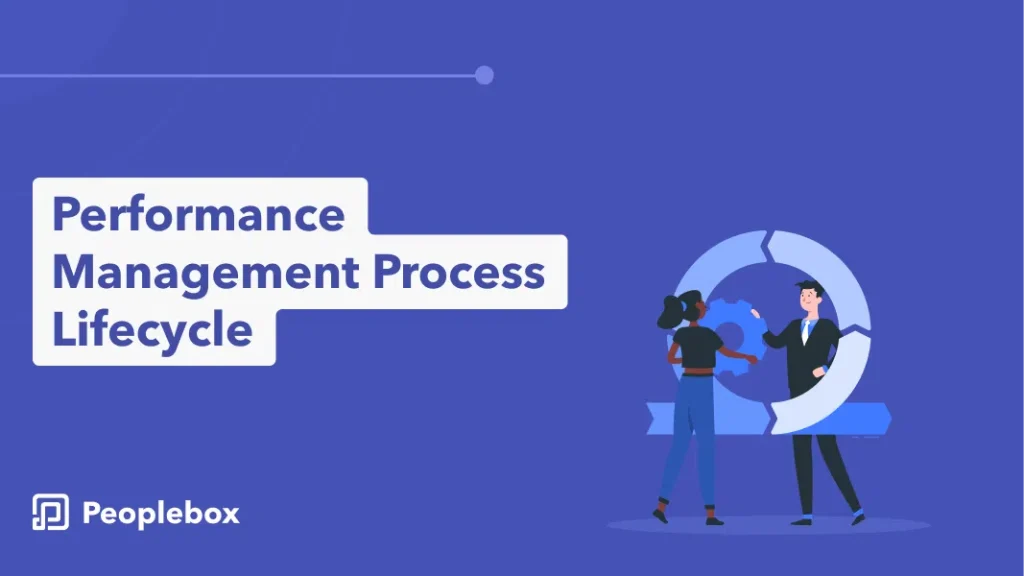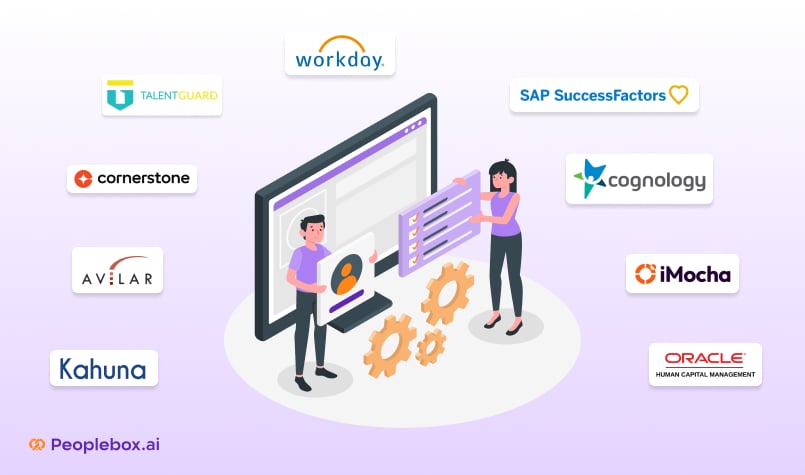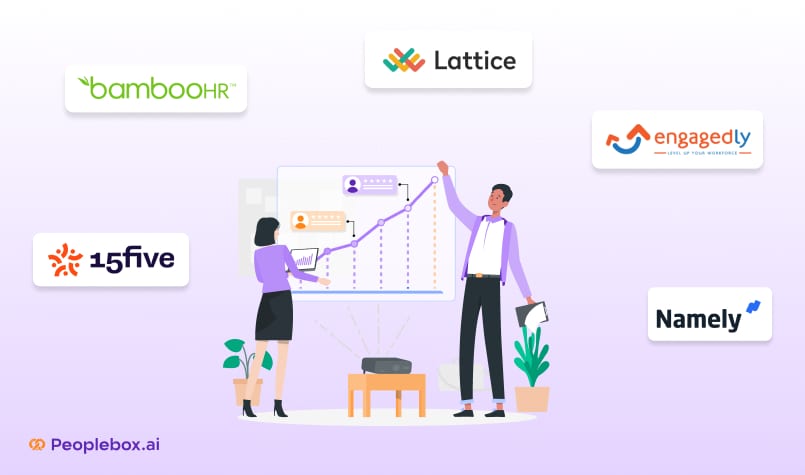People analytics is a field that involves the use of data analysis and statistical techniques to gain insights into an organisation’s workforce.
Some of the practical ways you can use analytics in your company:
- Find out why good employees leave, spot flight risks, and take measures ahead of time to reduce attrition.
- Track where your new hires come from and check for any systematic issues to ensure diversity in your workforce.
- Test common assumptions before investing time and resources in projects that may not make a significant impact: whether implementing a mentorship program enhances employee loyalty; does paying above market rate makes people stay longer; whether providing training improves people’s performance, etc.
- Get insights into the common behaviours and work patterns of top performers and their managers.
- Find insights to boost employee’s satisfaction, happiness, and productivity.
HR teams can gather the above information manually as well by analysing data from employee surveys, exit interviews, stay interviews, and by talking to managers about top performers. But people analytics tools are a game-changer because now HR
- do not need technical analytical skills,
- can collect and analyse data at scale,
- get quick feedback in minutes instead of hours – saving you time and making you agile, and
- have a competitive edge by allowing you to test different assumptions quickly.
In the current climate where companies are closely monitoring their expenses and scrutinising every penny spent, it’s crucial for HR to keep pace with the data-driven era. Various departments, from marketing to finance, have been using analytics successfully for years. HR is one of the top departments to be impacted in recent tech layoffs. Embracing data-driven practices is more important than ever for HR professionals.
Embracing analytics will empower HRs to influence business objectives, show the business impact of their function, and have a seat at the table. “The future of People Analytics is not as part of Human Resources, but instead will become a critical part of overall organisational analytics,” writes Peter Romero, People Analytics Lead at University of Cambridge, Psychometrics Centre.
Using people analytics can benefit the entire organisation, but it’s the job of an HR leader like the Chief Human Resources Officer (CHRO) to make a strong case for it, as the money for this comes from the HR department’s budget. You need to convince and assure other department heads that any investments in people analytics technology are well-spent and will give a good return on investment.
Building a business case for people analytics
A typical business case contains the following sections:
- Executive summary
- Problem statement
- Alternate solutions
- Proposed solution
- Success stories
- Expected benefits
- Costs
- Implementation plan
- Risks and challenges
- Conclusion
Let’s go into each of them in detail.
1. Executive summary
An executive summary acts as a brief introduction, presenting a snapshot of the business problem, proposed solution, and expected benefits. Its purpose is to offer a compelling overview, incorporating key insights from other sections. This is sometimes the only thing that the C-suite will have the time to read, so keep it concise and impactful.
2. Problem statement
When formulating a problem statement, pinpoint one or few critical challenges within your organisation that will be solved by implementing a people analytics software. Consider issues like high employee attrition, difficulties attracting top talent, employee productivity, cultural concerns, insufficient data for effective measurement, etc.
To identify critical challenges within the company, engage key stakeholders, such as heads of finance, marketing, customer success, product, and sales. Ask them questions like: “What are the gaps preventing them from doing their job efficiently?”, “What are some key employee or HR issues impacting their team?”
These interviews and research will take time but is an important step to make a compelling case for getting buy-in for people analytics. “Developing relationships with C-suite and senior stakeholders is essential to deliver on key business priorities,” highlights People Analytics Trends Report 2023.
3. Alternate solutions
In this section, discuss your previous attempts or alternative approaches to solve the problem mentioned in the above section. Also highlight their drawbacks.
For example, two alternate solutions are:
- Manual processes: These are difficult to scale and are time-consuming, resulting in missed opportunities and potential financial losses. Note the significant opportunity cost incurred by not addressing the issue promptly with a more efficient solution.
- Bringing in external consultants: It requires a significant investment of time and finances, with no assurance that the issue will be resolved.
4. Proposed solution
In this section, present people analytics tech as the solution to address the business problem. Explain briefly what a people analytics platform is, how it operates, and its growing significance in HR.
a.Success stories
Share success stories of popular companies using people analytics to make a business impact. For example, you can use the following case studies to enhance credibility and demonstrate the tech’s effectiveness:
- Microsoft: Microsoft uses HR analytics to create statistical profiles predicting employee attrition, especially among recent university hires. This insight prompts strategic interventions like mentorship and discussions on growth. By targeting high-turnover areas, Microsoft successfully reduced attrition rates by over half.
- McKinsey: McKinsey uses people analytics to identify characteristics associated with successful hires, and apply rigorous processes to evaluate candidates for those characteristics, resulting in an 80% increase in recruiting efficiency.
b.Expected benefits
Highlight some of the core benefits the organisation will get by adopting a people analytics software. Here are some of them:
- In case your company is already using data in some way to make HR-related decisions, you can make a case that they will get the same information more efficiently.
Point out that “the company is already making a lot of HR-related decisions without data and that using data will allow the company to make these decisions better or faster or for less money than using the archaic decision-making processes,” writes Mike West, a people analyst consultant for Zoom, Reddit, Udemy, and Atlassian.
- Identify potential cost savings, such as by reducing employee turnover costs or optimising talent recruitment processes.
The cost savings can be substantial, given, for example, it costs a company 33% of the departing employee’s salary to find a replacement. The turnover costs are related to finding, hiring, and training the new employee, and onboarding the person leaving. It can also be in the form of staff time and other resources.
- Identify financial gains achieved by improving worker productivity and performance.
c. Costs
Outline the typical costs of using a people analytics software. You can add the market rates for some of the top softwares in the market and their pricing structure.
Most HR analytics software typically follow a pricing model based on a “per user, per month” basis. Entry-level pricing plans for these products usually span from $2 to $53 or more per month.
d. Implementation plan
The implementation plan outlines the steps to deploy the software. It will include things like:
- Timelines and Milestones:
Share the timeframes for each aspect of using people analytics: implementing the software, running a project, and actually seeing business impact.
- Team and team structure
Who will be the person in charge of implementing the software?
To ensure that the projects undertaken are aligned to business objectives, the team may report to the business head instead of the HR head.
- Resources needed
Share if you would need collaboration with other departments or key stakeholders to collect or verify data.
e. Risks and challenges:
Highlight potential risks and challenges in implementing people analytics, as well as plans to mitigate them. Here are some risks and ways to solve them:
- Data privacy issues: During software audits, investigate data privacy issues with providers. Assess their privacy, governance, and security measures, and check if they have industry standard certifications.
- Inaccurate or incomplete data: If your people data is inaccurate, incomplete, duplicative, or outdated, it isn’t suitable for quality analyses. Loop in people from other teams who may help verify the accuracy and completeness of data.
- Pushback from employees: Some employees may fear that the data collected about them can be used against them. Address this concern proactively in the following way:
- Transparency is Key: Clearly communicate the types of employee data collected and the specific purposes behind it. Transparency builds trust.
- Emphasise Privacy Measures: Highlight robust privacy measures in place, including who within the organisation will have access to that data. Assure that employee data is handled securely and ethically.
- Employee Benefits: Articulate how the collected data is intended to enhance employee experiences, tailor benefits, and improve work conditions, emphasising mutual benefits.
- Compliance Assurance: Reinforce the commitment to legal and ethical data usage, adhering to relevant regulations and industry standards.
- Employee Involvement: Encourage employee involvement in data-related decisions, fostering a sense of control and collaboration.
- Discrimination and bias: If not careful, human bias and discrimination can be replicated and scaled with people analytics. The tech can be misused to “justify existing organisational systems and to unfairly scapegoat individuals who are not performing well in no small measure because of the weaknesses and constraints of those systems,” writes Ben Dattner in HBR.
Strict policies may need to be set up and professionals in ethics and diversity may need to be consulted to ensure this does not happen.
5. Conclusion
Summarise your business case and highlight the significance of people analytics for the company.
Presenting the business case: Best practices
1. Share the document in advance
Foster a climate of preparation and engagement by sharing your business case document with key stakeholders ahead of the presentation. This allows them to familiarise themselves with the details, ask informed questions, and be ready for a constructive discussion.
2. Present a high-level version in the meeting
Do not read everything directly from the presentation. Focus instead on highlighting only the most impressive and high-level points, so that your audience can grasp the essence of the proposal without getting bogged down by unnecessary details.
3. Tell a story
Craft a compelling narrative that brings your business case to life. Weave in real-world examples, challenges, and successes to engage your audience emotionally.
4. Open the floor for Q&A
Allocate dedicated time during or at the end for questions and objections. It ensures stakeholders feel heard, questions are addressed, and objections are handled promptly.
To address concerns confidently, anticipate potential issues in advance and come prepared. Remember the aim is to achieve the best results for the business, not to prove anyone wrong.
Conclusion
In conclusion, crafting a compelling business case for people analytics is pivotal in steering HR into the data-driven era. Engaging key stakeholders, identifying key issues, showing limitations of alternate solutions, and highlighting the benefits, success stories and a well-structured implementation plan for people analytics make your case convincing and powerful.







